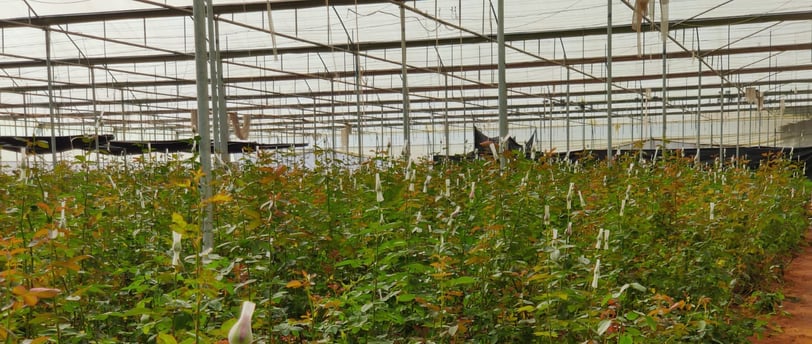Why is CEA good for Rose and other flowers
Blog post description.
Sreowshi Sinha
2/15/20242 min read


Controlled Environment Agriculture (CEA), including the use of greenhouses or polyhouses, provides several benefits for the cultivation of roses and other flowers. Here are some reasons why CEA is advantageous for flower cultivation:
Year-Round Cultivation: CEA allows for year-round cultivation of flowers, overcoming the limitations imposed by seasonal changes in temperature and sunlight. This continuous production ensures a stable and consistent supply of flowers to the market.
Climate Control: Greenhouses provide a controlled climate, allowing growers to optimize temperature, humidity, and light conditions. This control is particularly beneficial for flowers like roses, which may have specific temperature and light requirements for optimal growth and flowering.
Protection from Adverse Weather: Roses and other flowers are sensitive to extreme weather conditions, such as frost, hail, or heavy rain. Greenhouses provide a protective environment, shielding the plants from adverse weather and minimizing the risk of damage to flowers.
Pest and Disease Management: CEA enables better control over pests and diseases. Greenhouses create a physical barrier that limits the entry of pests, reducing the need for chemical pesticides. This is essential for maintaining the quality and appearance of flowers.
Water Management: Controlled environments allow for efficient water management through techniques like drip irrigation or hydroponics. This ensures that flowers receive an optimal and consistent water supply, reducing water wastage and minimizing the risk of diseases caused by waterlogged soil.
Optimal Light Conditions: Greenhouses enable growers to control the amount and duration of sunlight that flowers receive. This is crucial for achieving uniform growth, bud development, and flower quality. Supplementary lighting can also be added to extend the photoperiod, allowing for year-round cultivation.
Improved Quality and Appearance: The controlled conditions of CEA contribute to the overall quality and appearance of flowers. Roses, for example, are known for their aesthetic value, and CEA helps ensure that they meet market standards regarding size, color, and shape.
Resource Efficiency: CEA allows for more efficient use of resources such as water, fertilizers, and energy. With precise control over environmental conditions, growers can optimize resource inputs, leading to higher yields with reduced waste.
Space Utilization: Greenhouses enable vertical farming and efficient space utilization. This is particularly beneficial in areas with limited available land, allowing growers to maximize production in a confined space.
Extended Vase Life: With careful control of post-harvest conditions, including temperature and humidity, flowers grown in controlled environments often have an extended vase life. This is a crucial factor for both consumers and florists.
Market Demand: The ability to supply flowers consistently throughout the year, regardless of external weather conditions, helps meet the continuous demand for flowers, especially during special occasions and holidays.
In summary, CEA provides a controlled and optimized environment that enhances the overall productivity, quality, and marketability of flowers like roses. It enables efficient, sustainable, and year-round flower cultivation, meeting the demands of consumers and florists alike.
